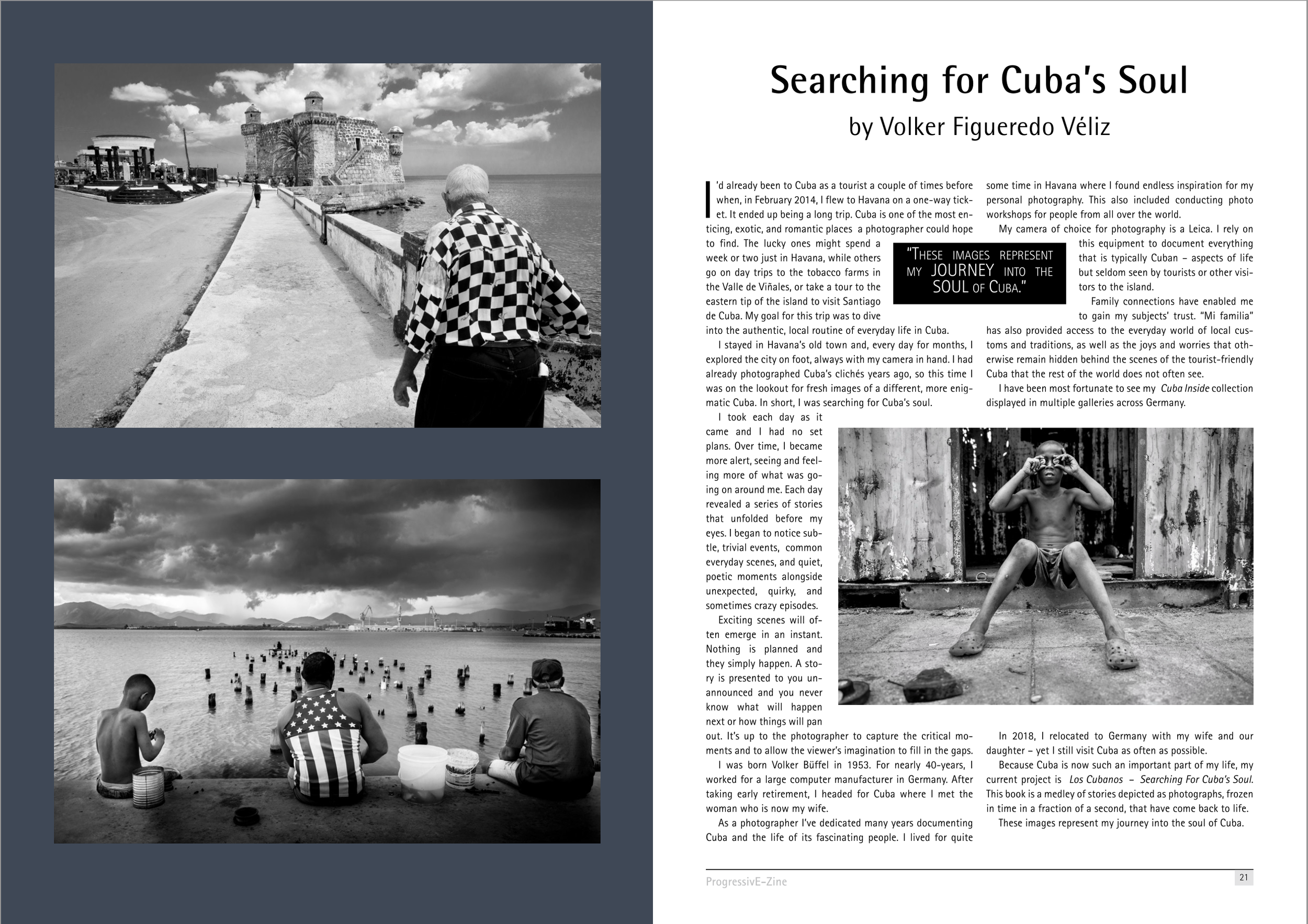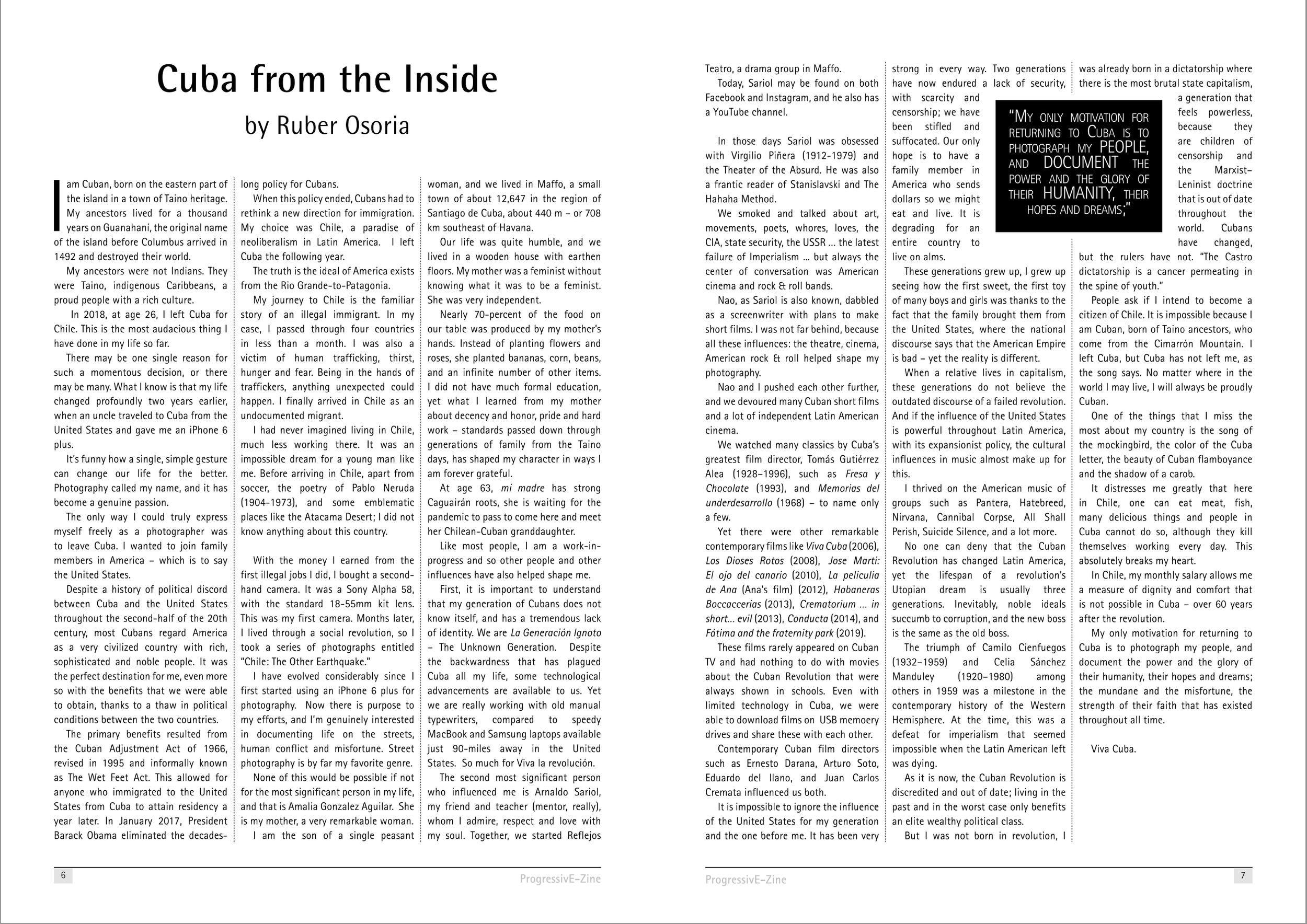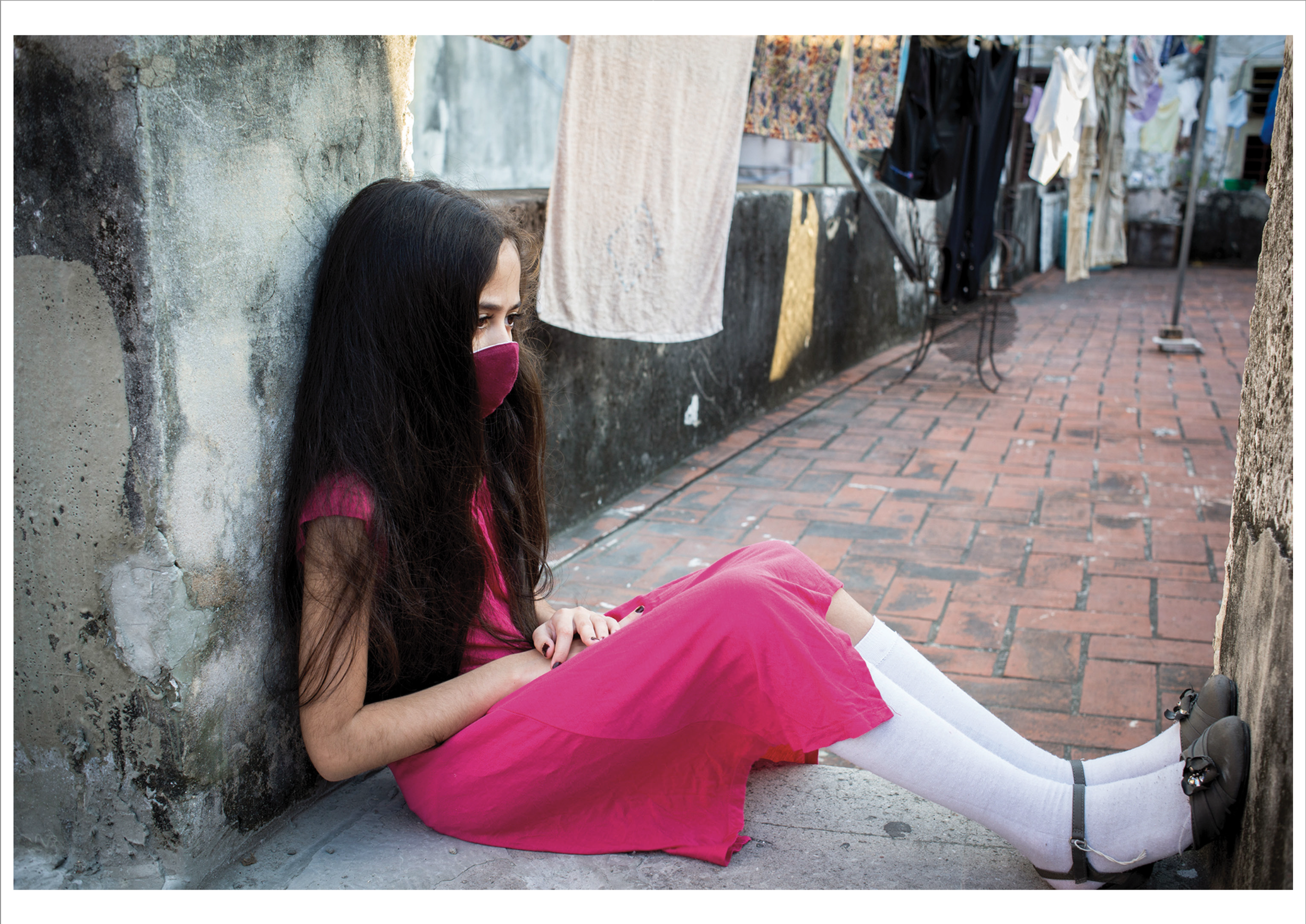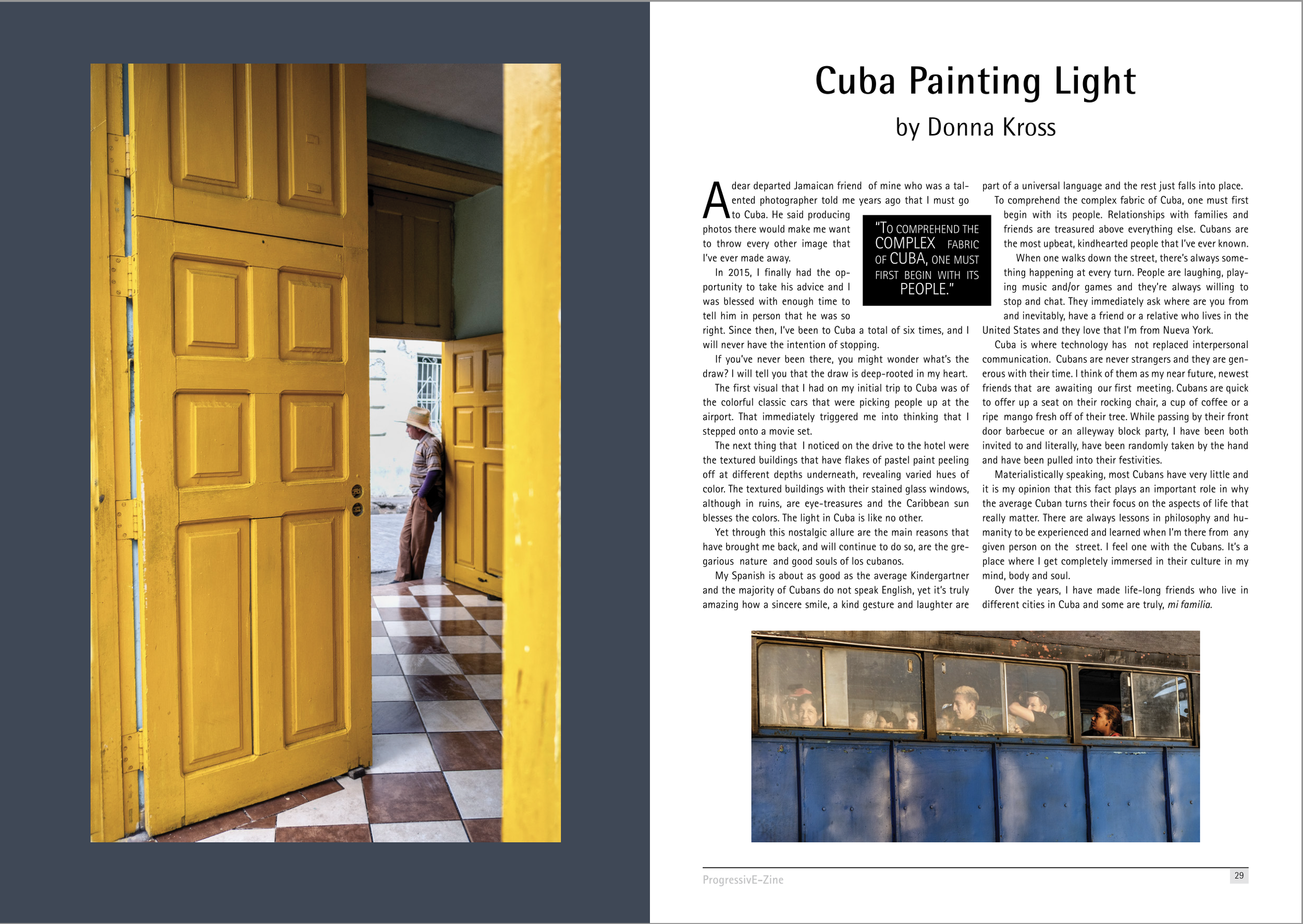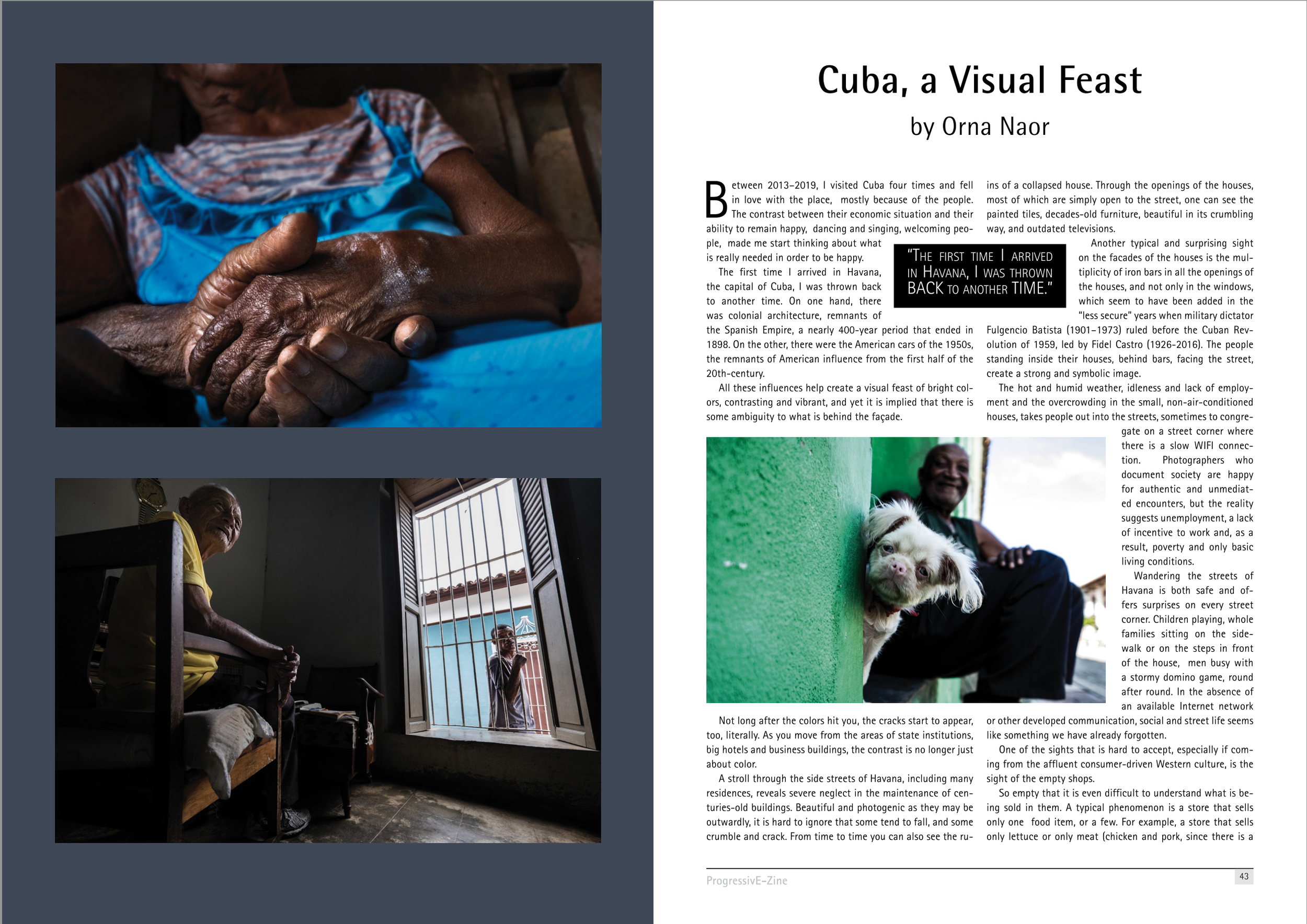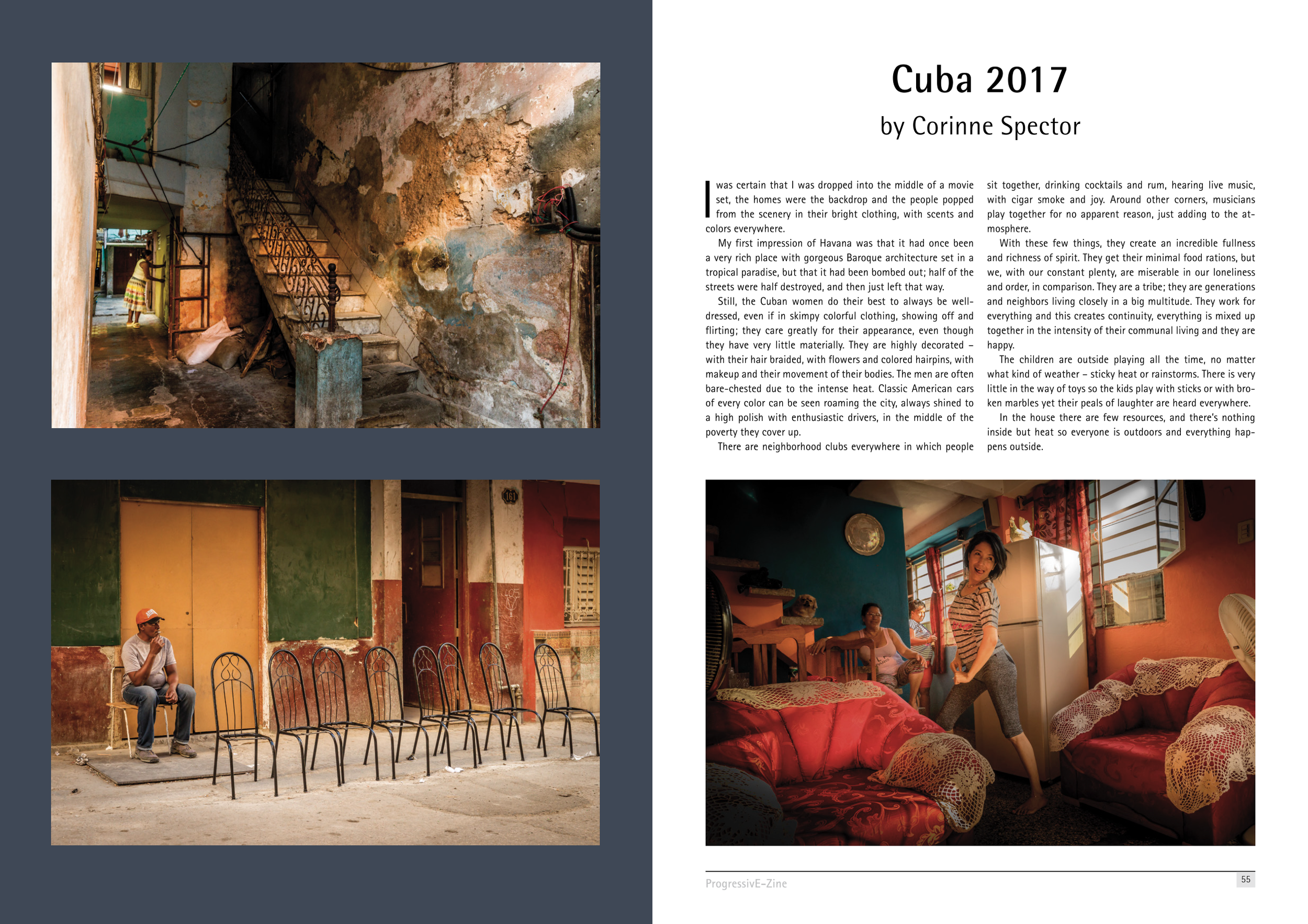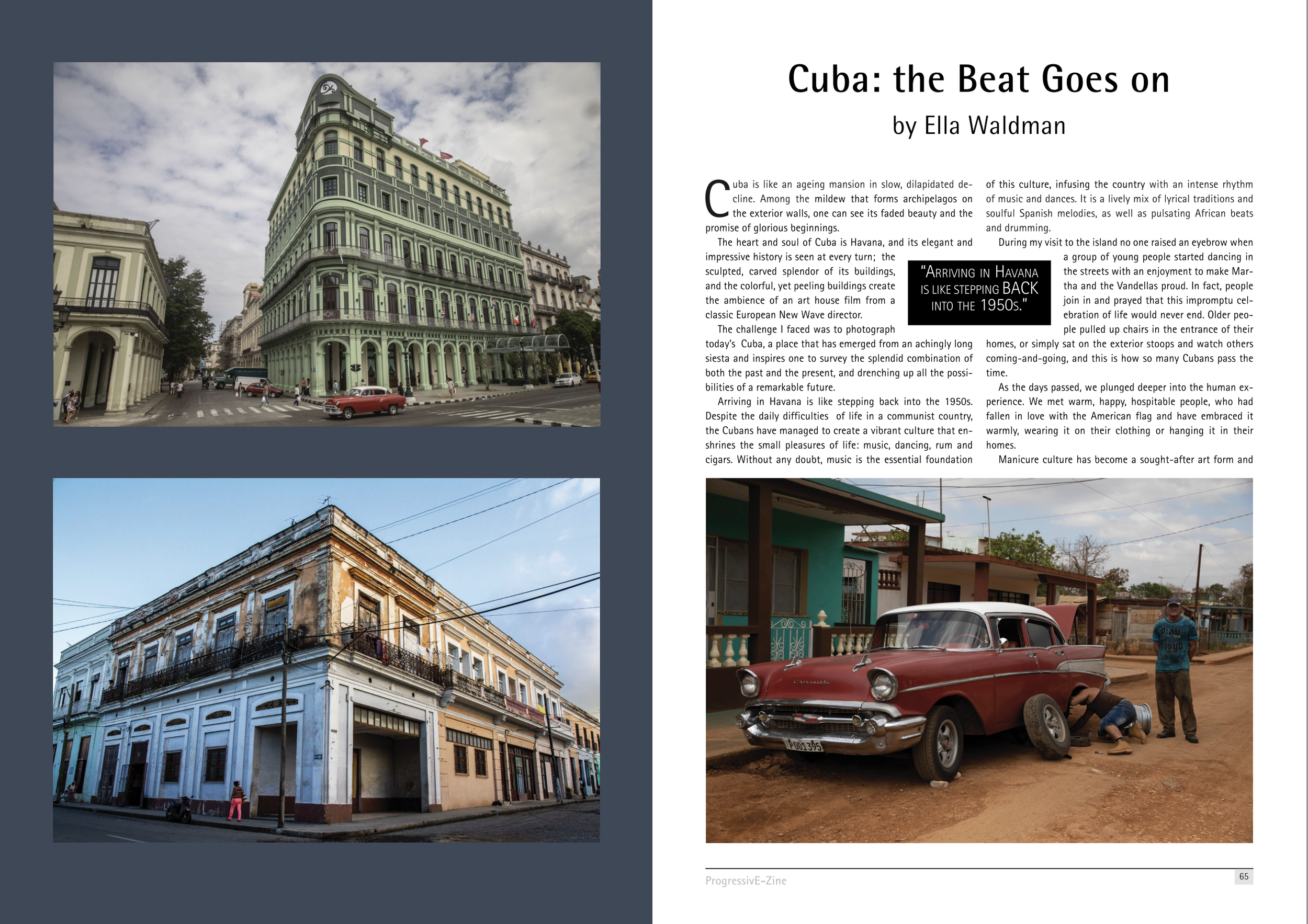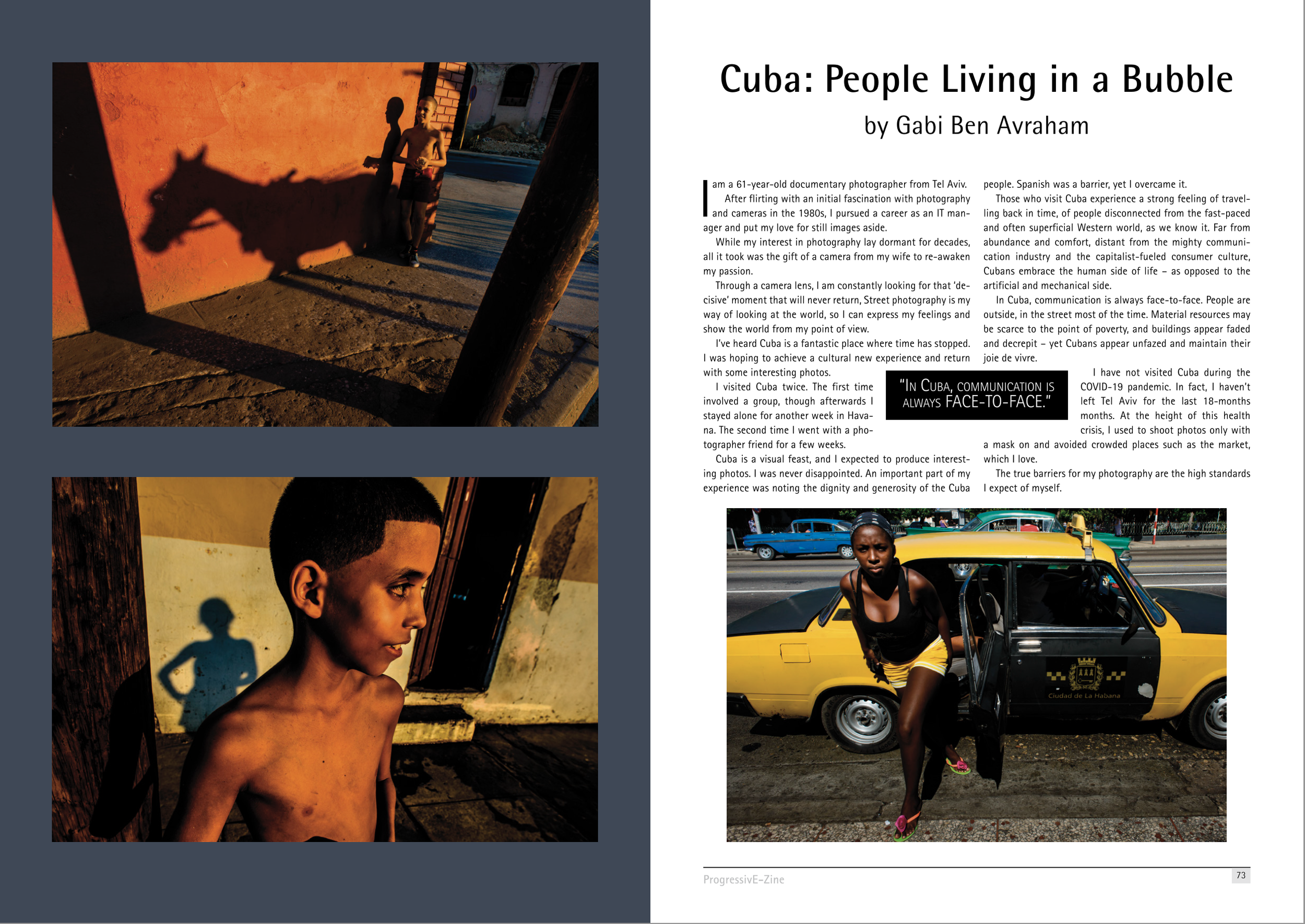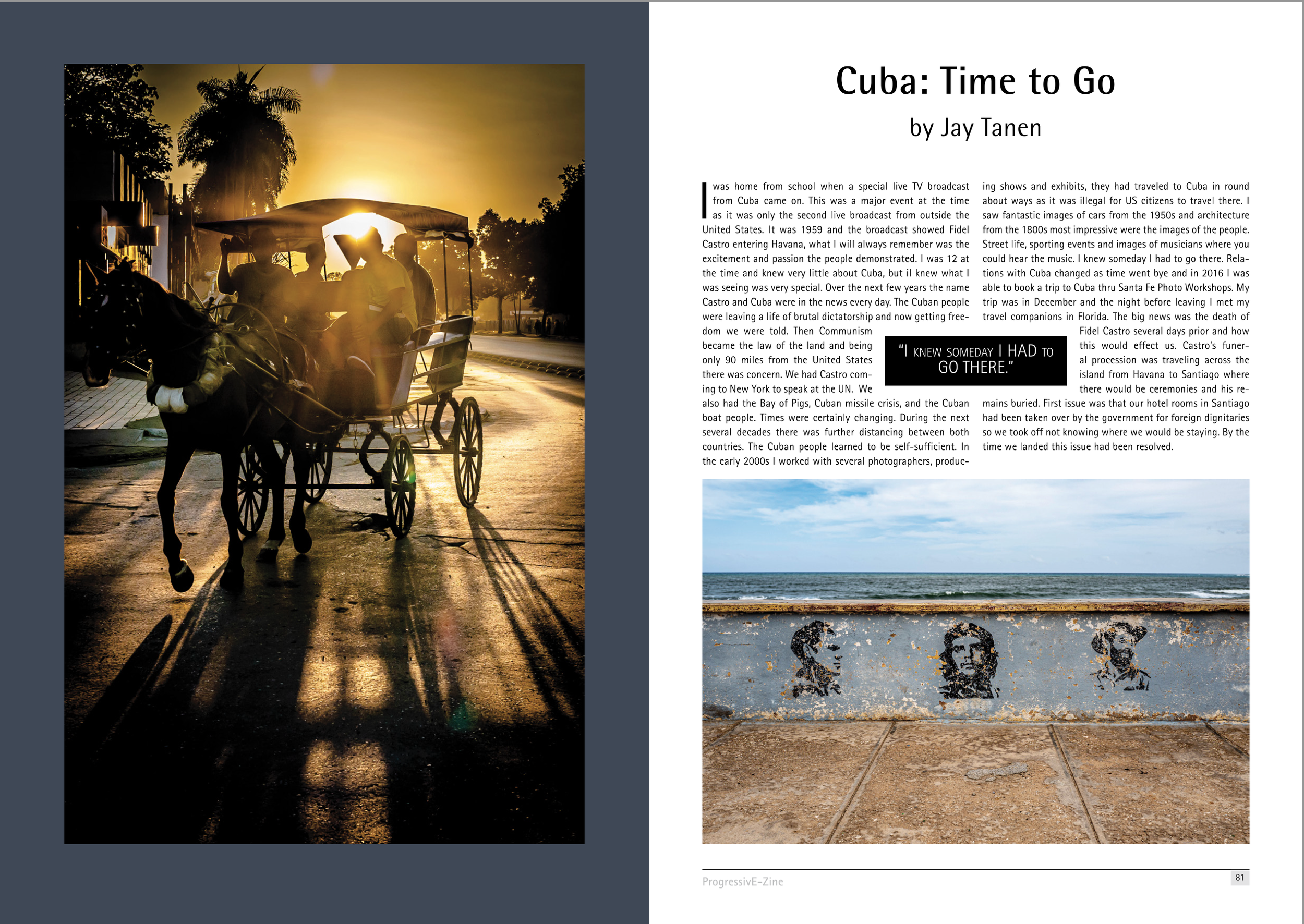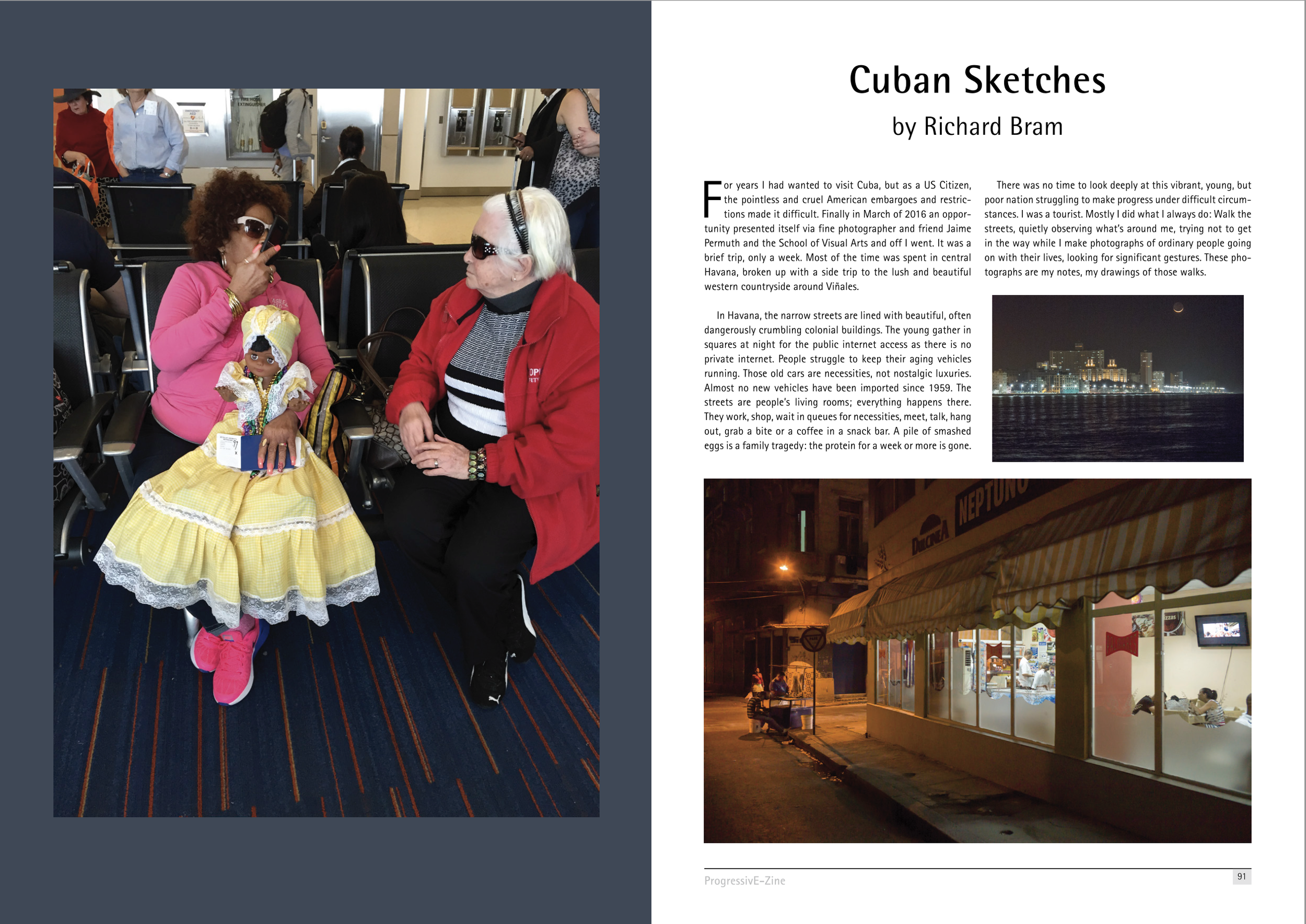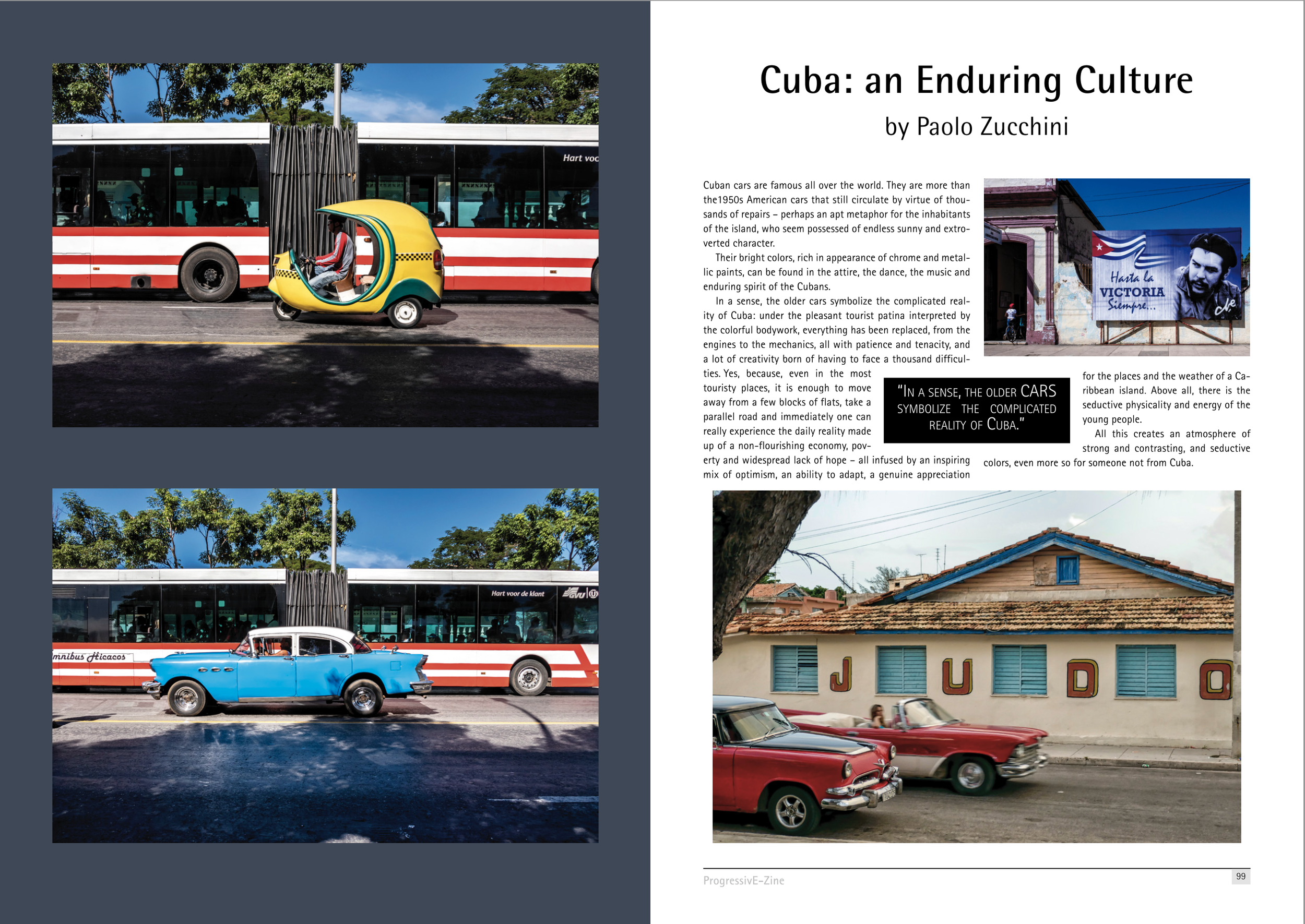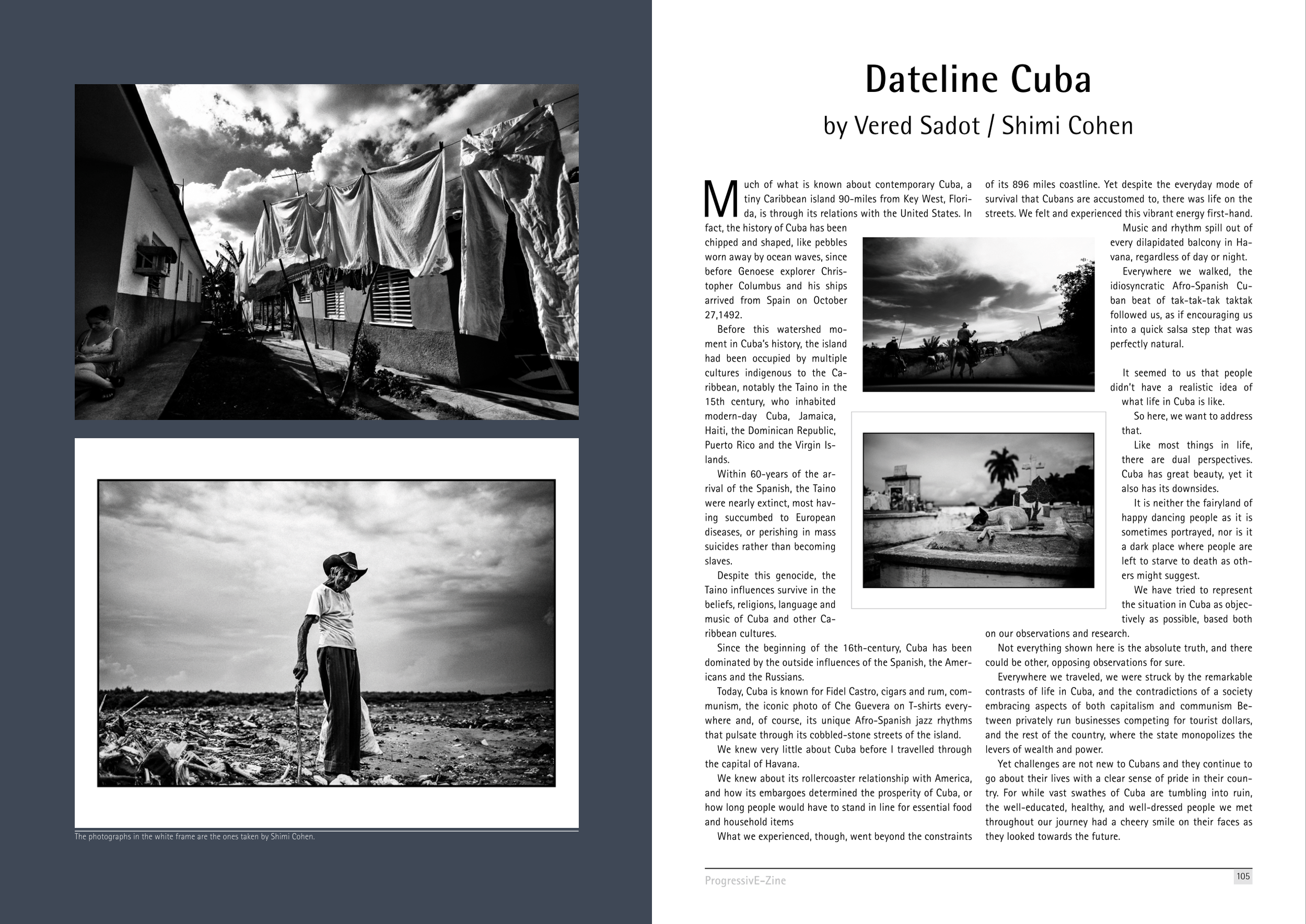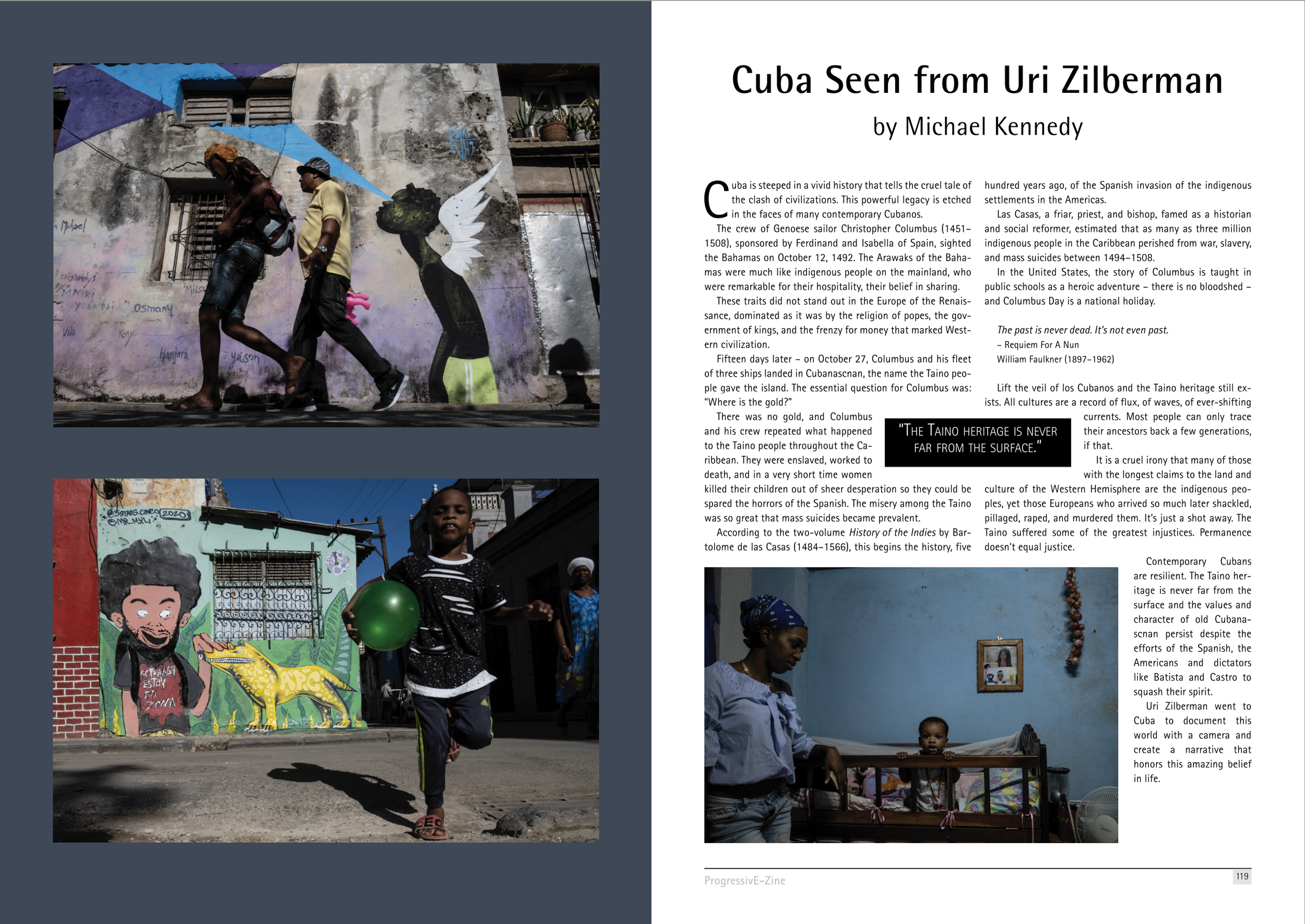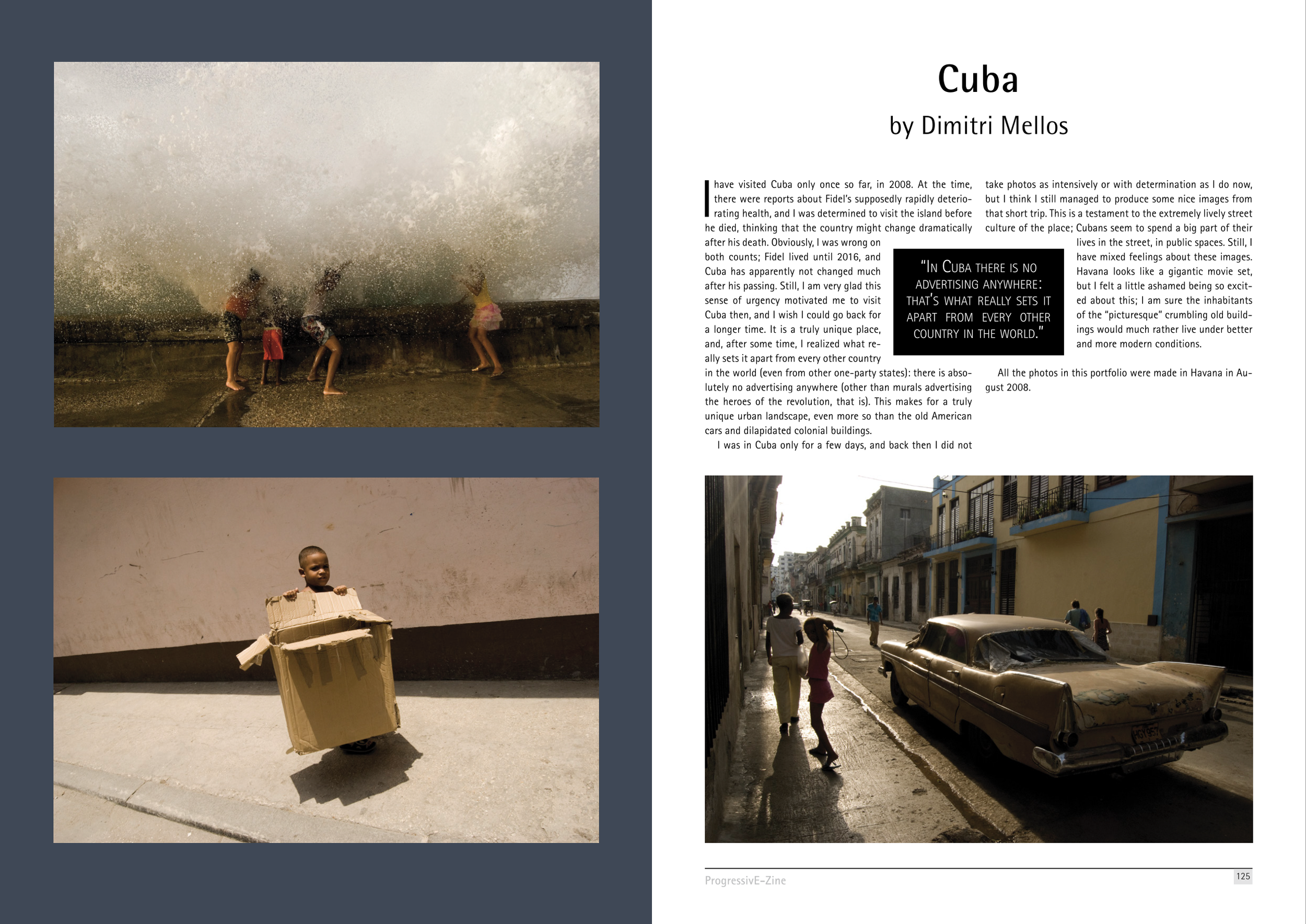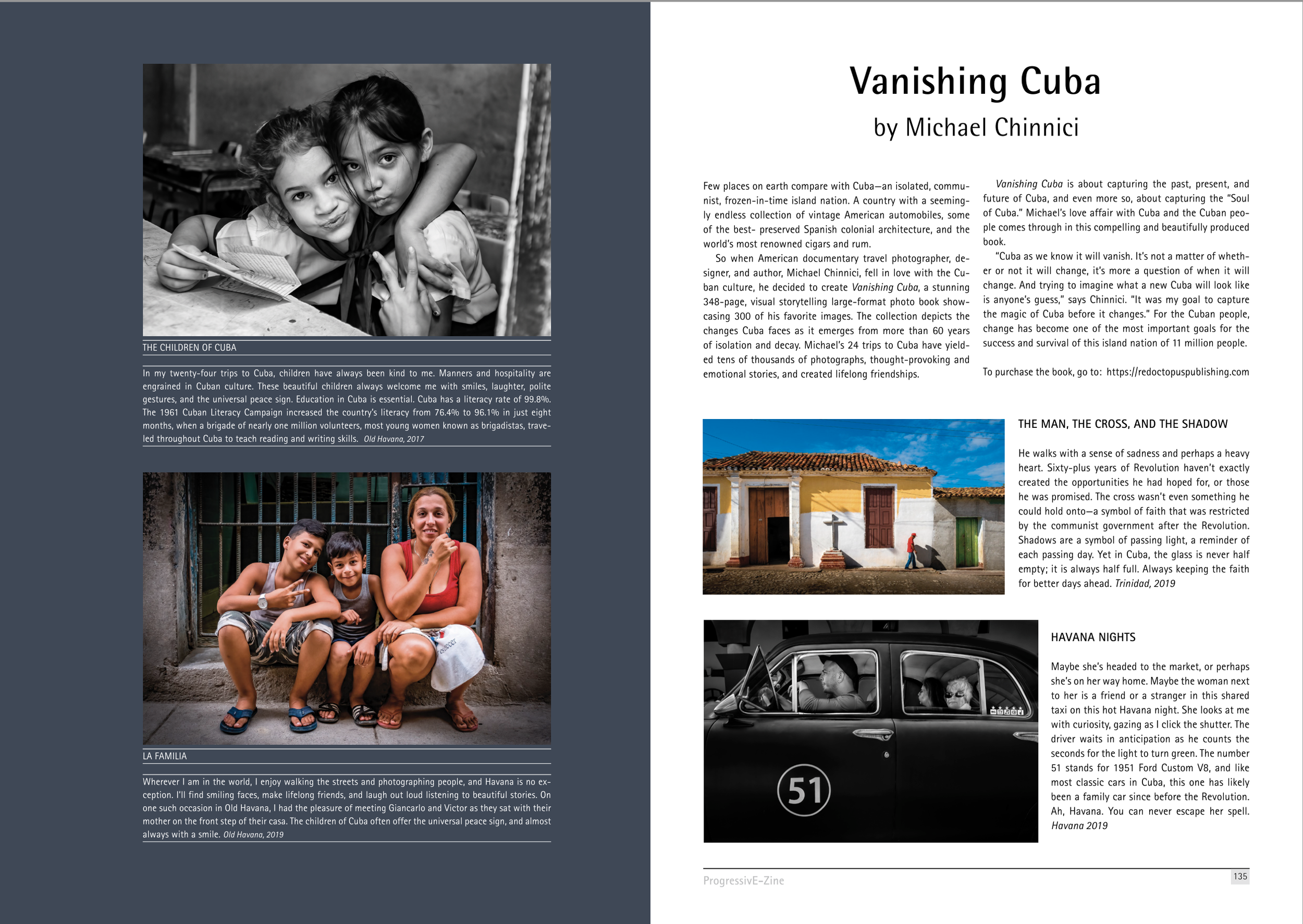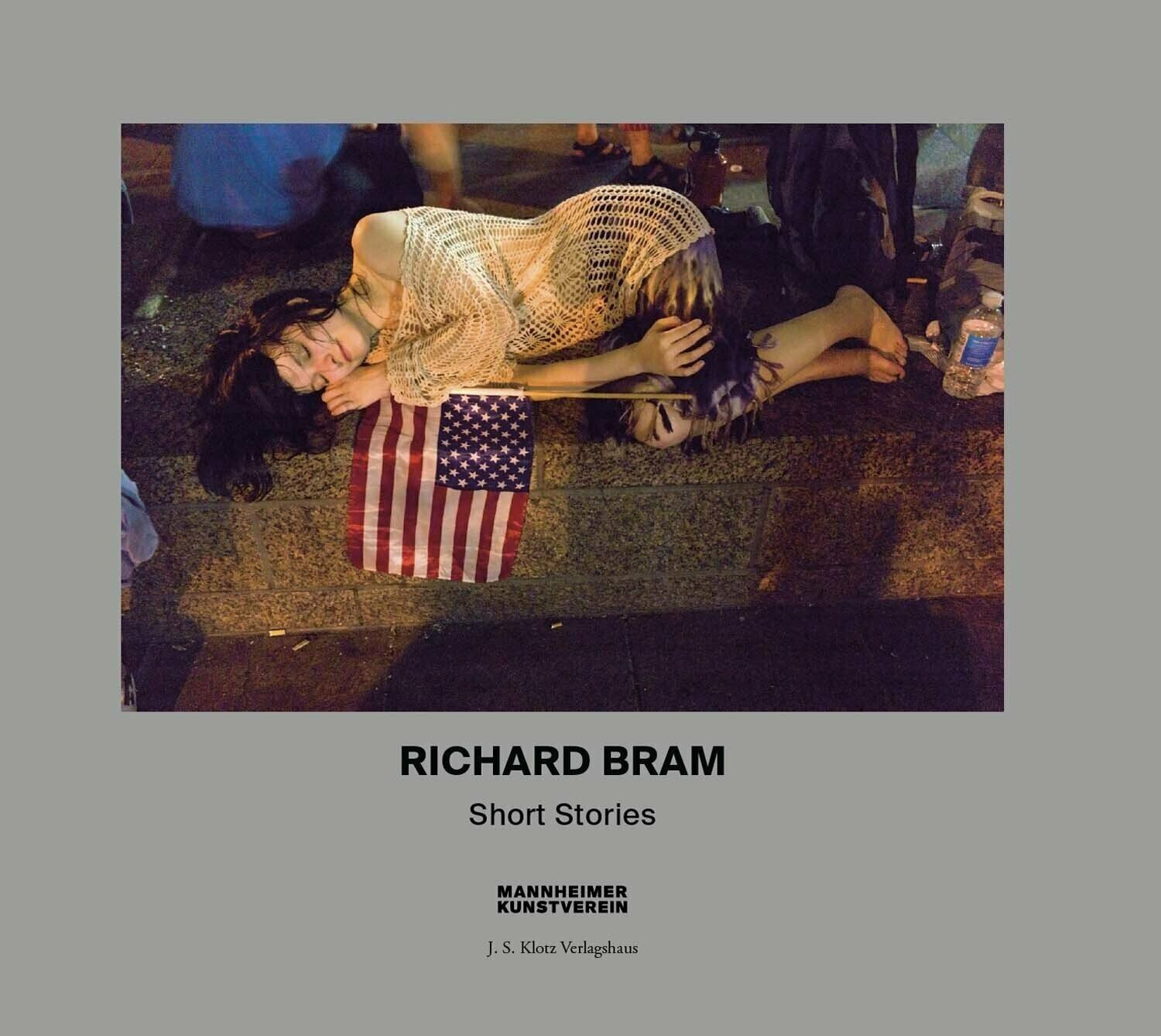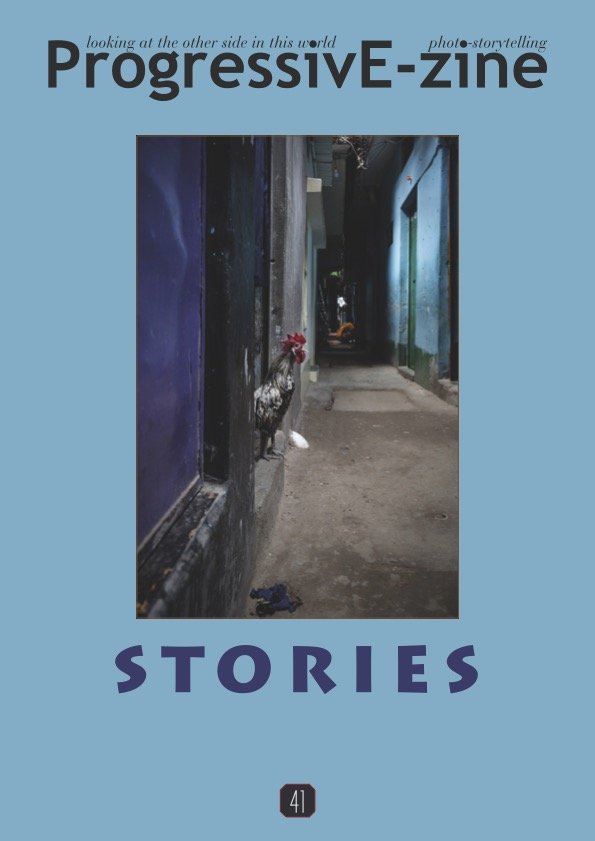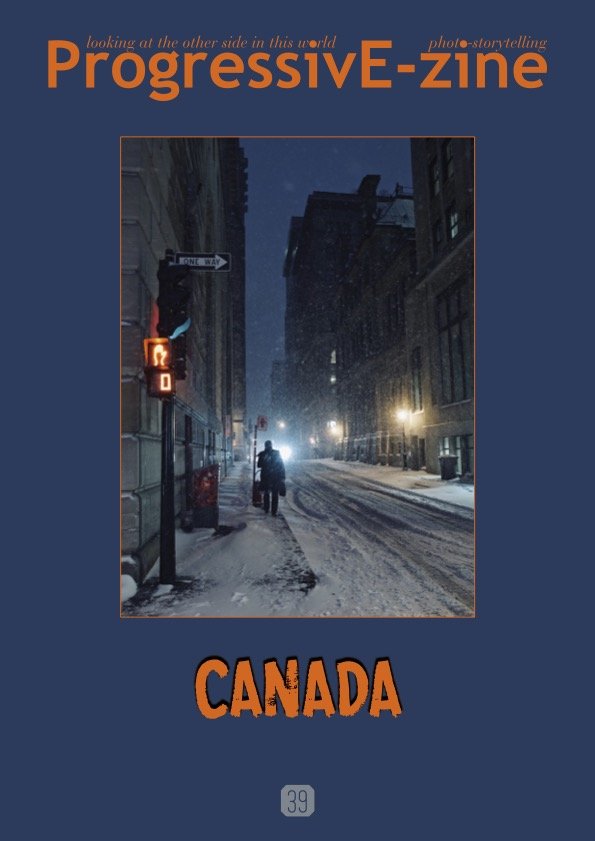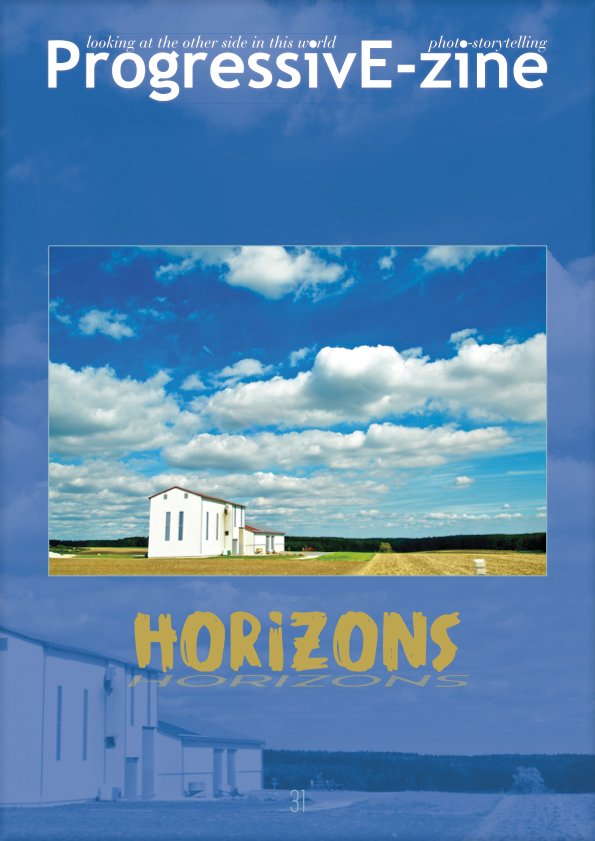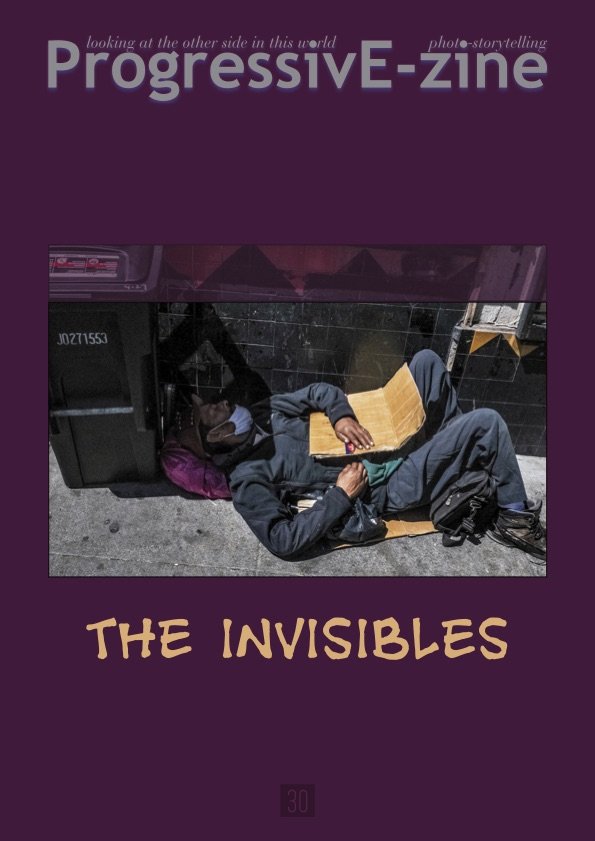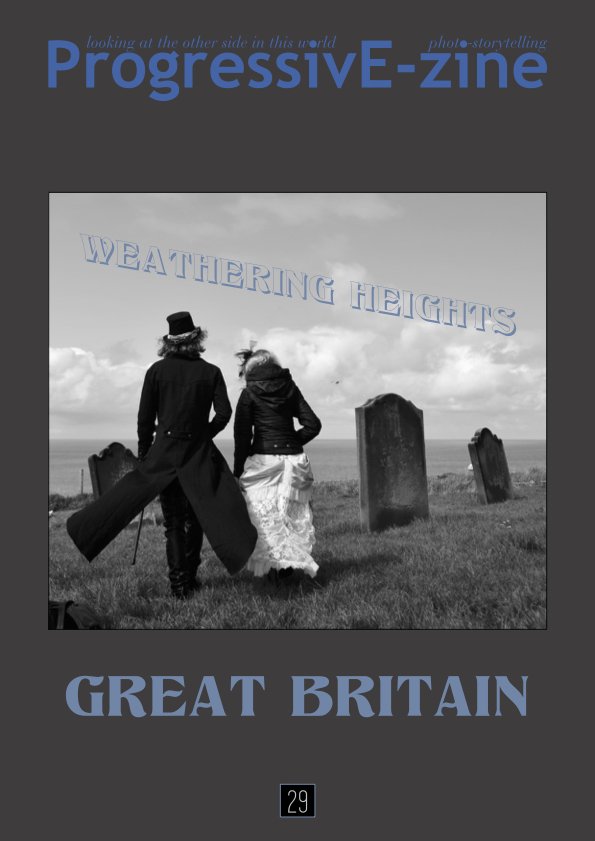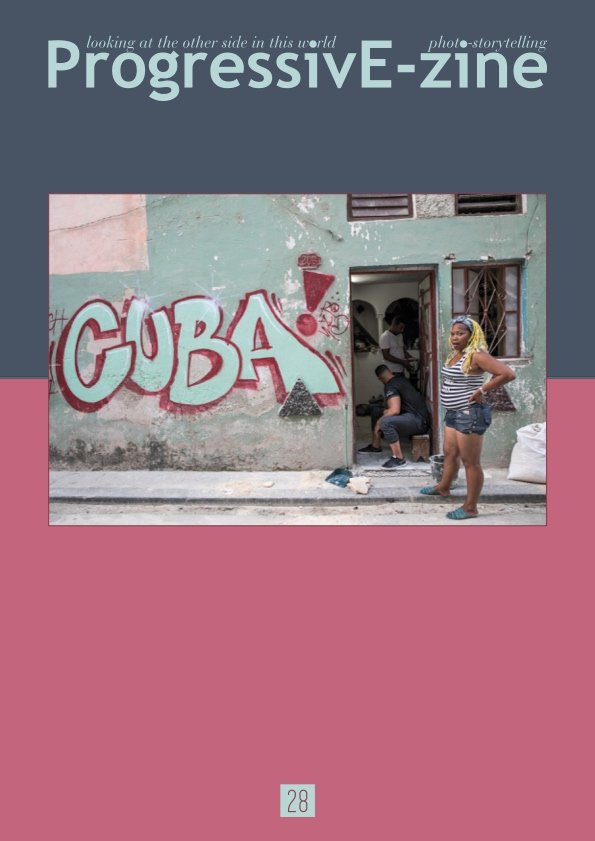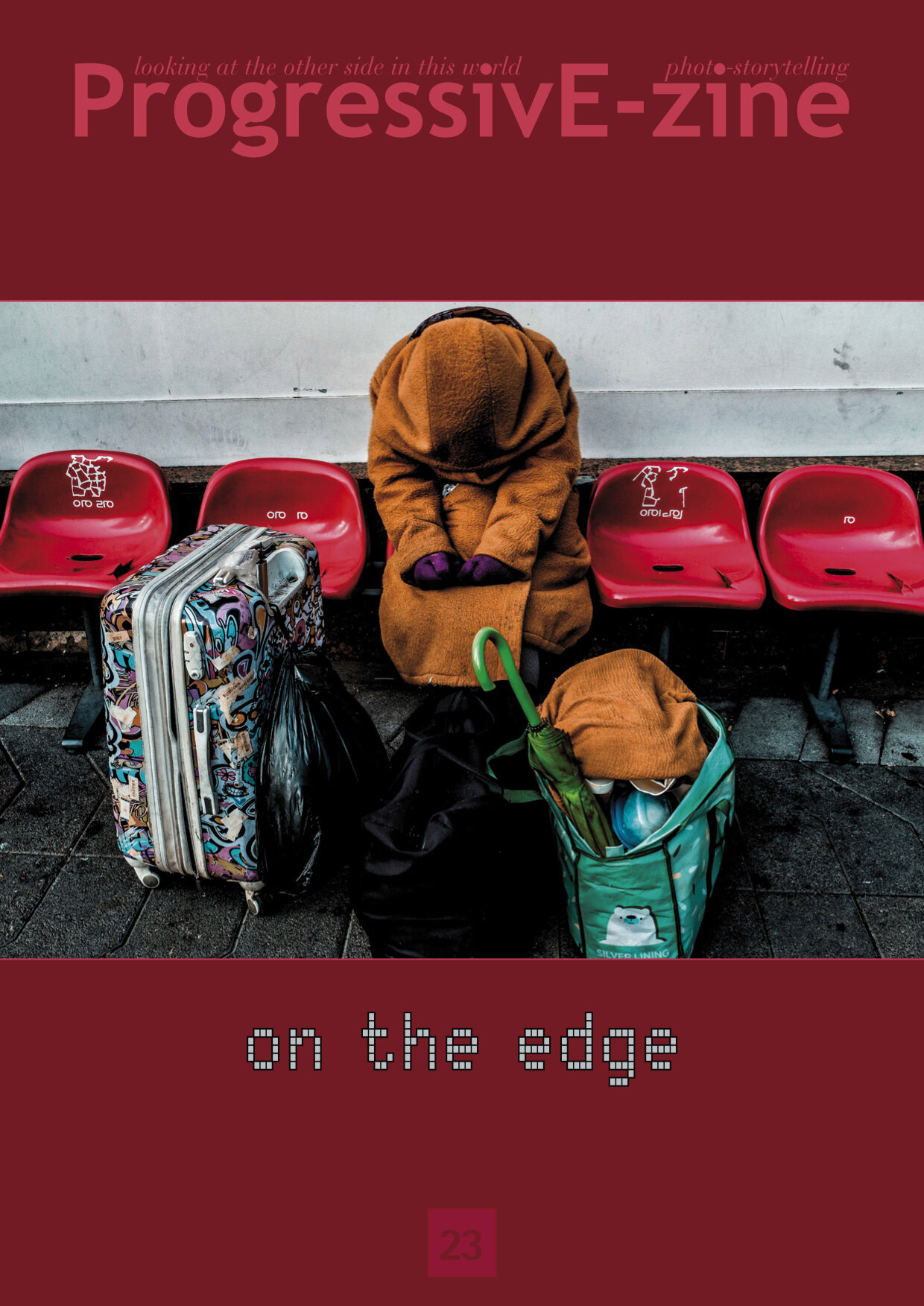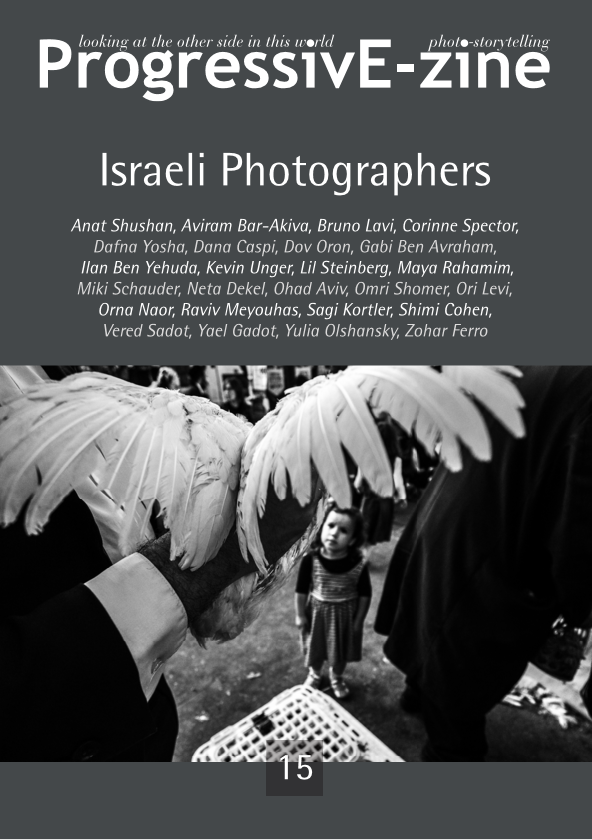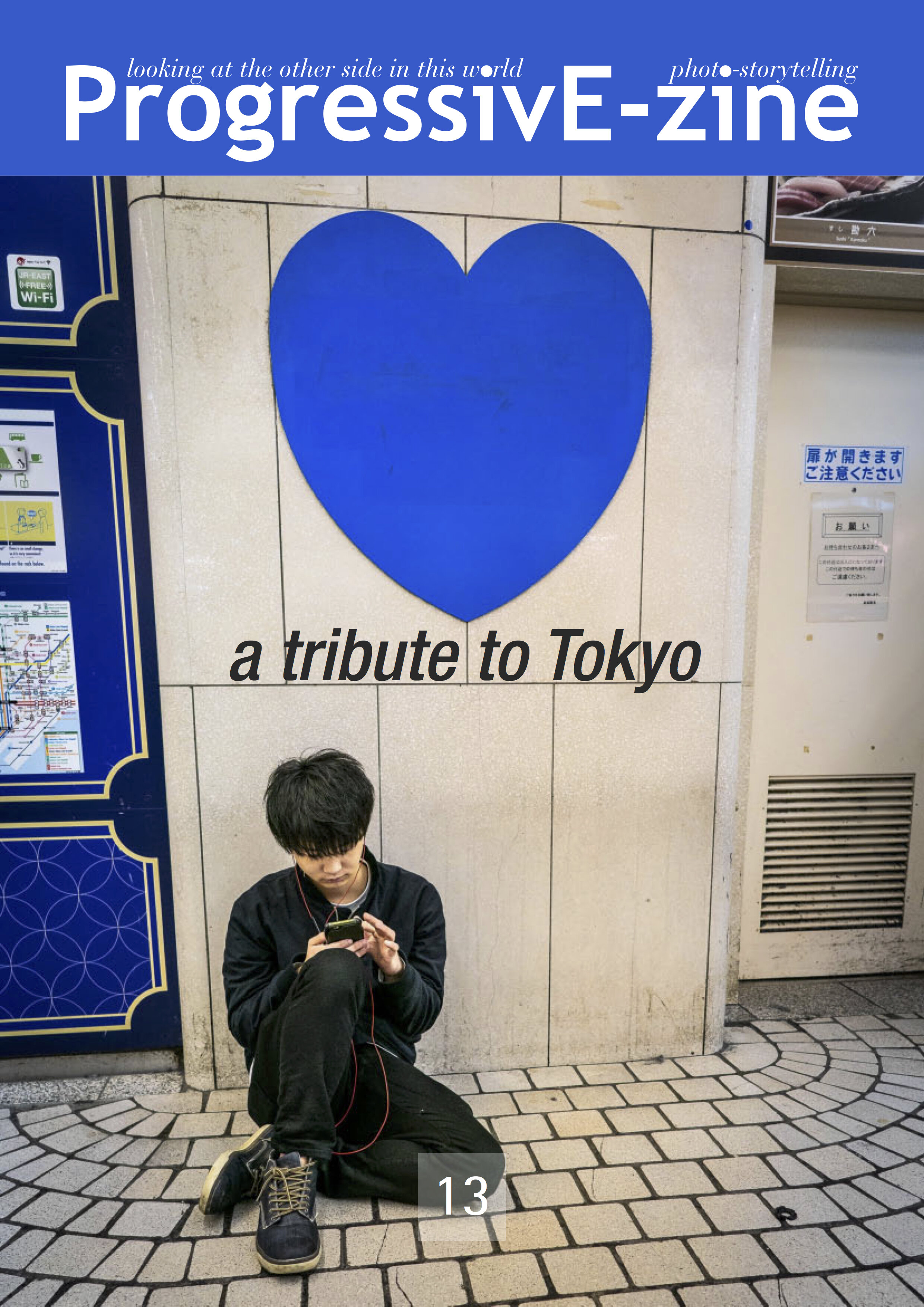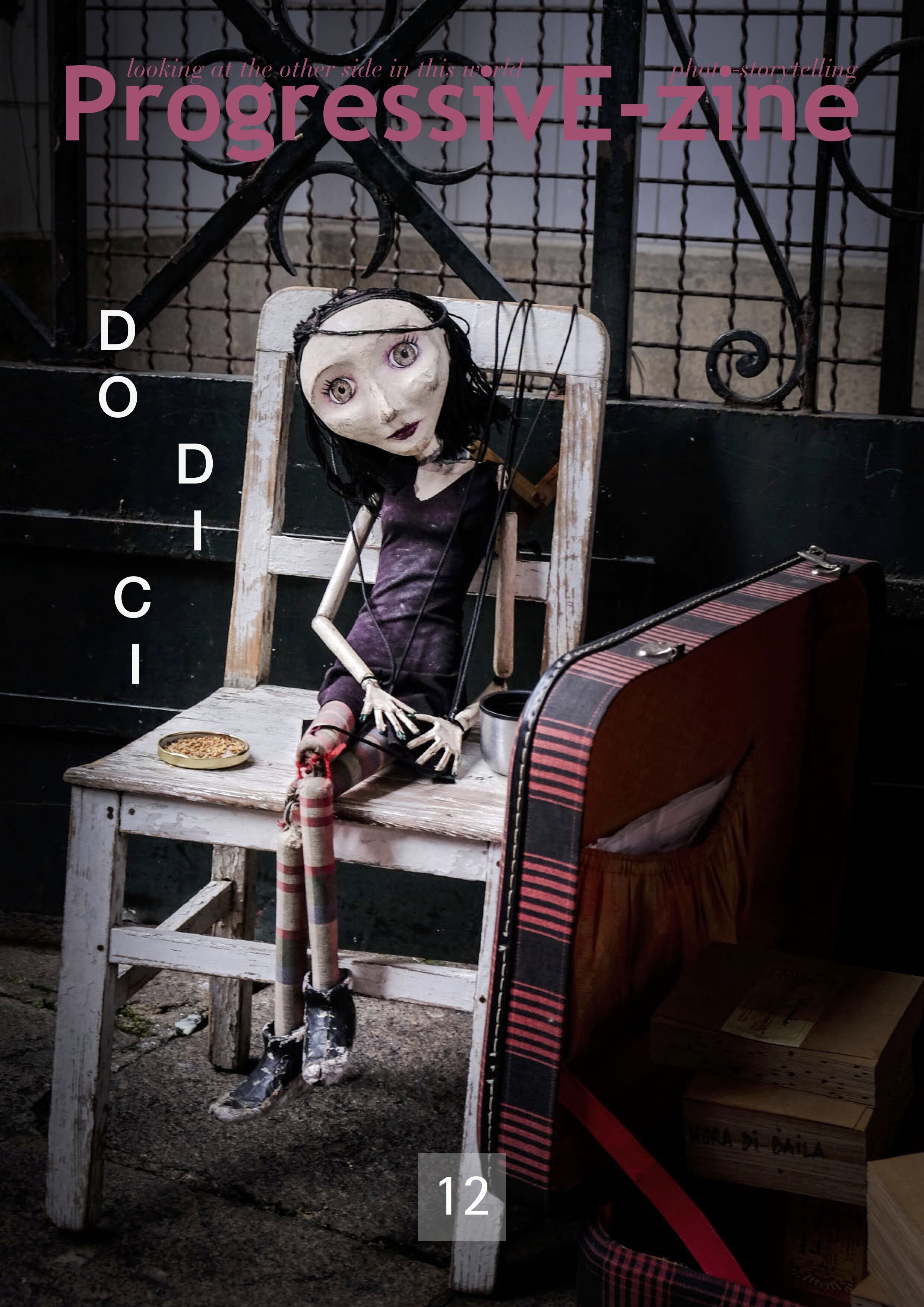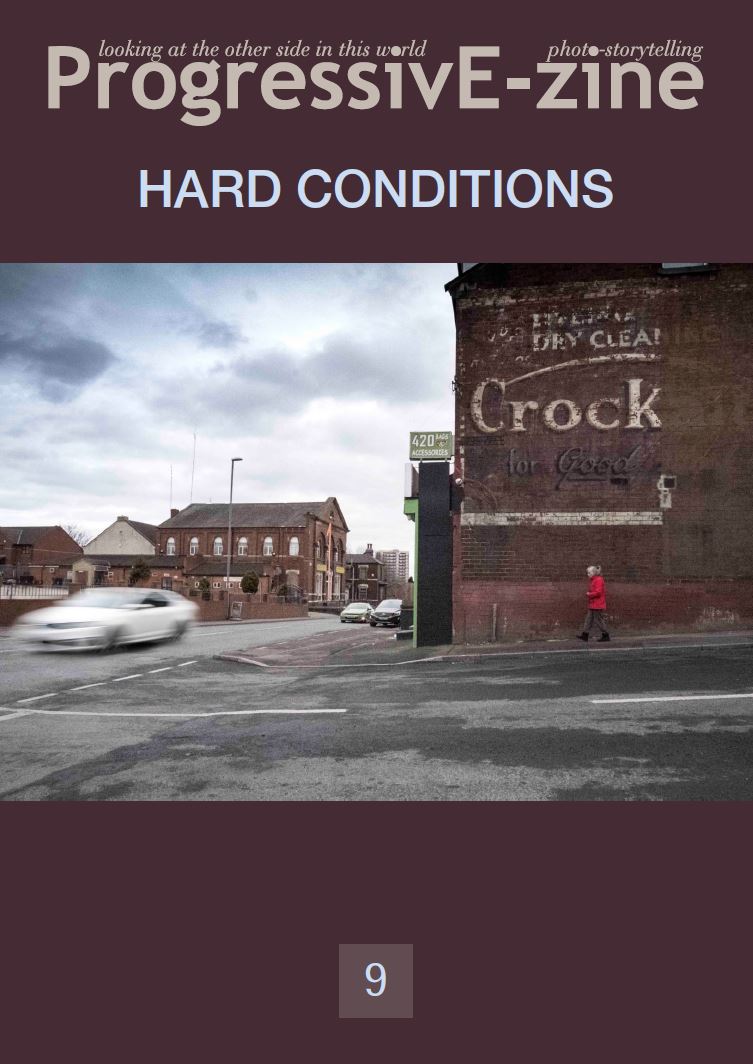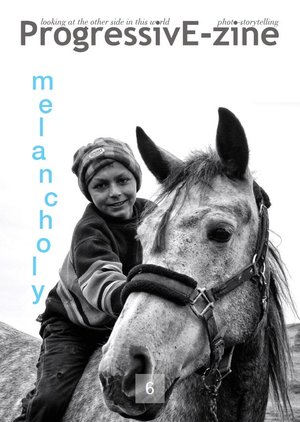Cover by Ella Waldman / 140 pages
ProgressivE-zine is a no-profit magazine
We're offering you the opportunity to get the print version from the on-demand printing house Peecho.* Purchase your copy on our website by clicking on the magazine cover. If you prefer a non-printable, high-quality version, you can download it by signing up and making a donation of 5 euros or 40 euros for a year. Your support will help us continue producing magazines.
An issue on Cuba is a difficult issue. We looked for Cuban photographers but only one accepted our invitation, Leysis Quesada. We did, however, find a photographer, Volker Figueredo Véliz, who married a Cuban wife, lived in Cuba keeps going back and has recently written a book. Also, we have a Cuban photographer who only became a photographer after leaving his Island, Ruber Osoria. Then there’s a photojournalist, Michael Chinnici, who has just published a book in which he expresses his thoughts on the island.
As for the others, these are photographers who loved Cuba and who show us how they lived it: a bubble, a dream, a different reality ...
The Cuba of our imagination is portrayed in its daily reality.
Thanks to Michael Kennedy for his editorial work on this issue
Back Cover by Jay Tannen
Access to the complete issue is exclusive to donating subscribers
Photographers of Progressive Street
Corinne Spector: https://www.progressive-street.com/photographers#/corinne-spector/
Dimitri Mellos: https://www.progressive-street.com/photographers#/dimitri-mellos/
Frans Kemper: https://www.progressive-street.com/photographers#/frans-kemper/
Jay Tanen: https://www.progressive-street.com/jay-tanen
Michael kennedy: https://www.progressive-street.com/photographers/#/michael-kennedy/
Ruber Osoria: https://www.progressive-street.com/photographers#/ruber-osoria/
Shimi Cohen: https://www.progressive-street.com/photographers#/shimi-cohen/
Leysis Quesada Vera was born on April 28, 1973 in Cienfuegos, Cuba. Her family settled in Amarillas, in the province of Matanzas, a place she would later explore in her earliest photographic work. Originally, Quesada Vera studied English and worked as a professor for three years in a junior high school in Havana. When the Maine Photographic Workshop came to Havana in 1999, she would visit the Fototeca accompanied by her cousin Lazaro Miranda, a well-known photographer, who then helped her land an assistant position with the Maine staff. It was during this time that Quesada Vera met Jon Golden, a photographer in one of the workshops who gave her a Nikon FM2 camera. It was with this camera that Quesada Vera made her most important first photographs and it was the only camera she used until she began taking digital pictures. By 2001, she had worked alongside photographers David Alan Harvey and Stacey Boge, both of whom she considers important early mentors. According to Quesada Vera, it was not until January 2000 that she became a “serious” photographer. Inspired by her cousin Lazaro’s work with interiors, she studied the works of master photographers and was particularly drawn to the work of photographers Sebastian Salgado and Sally Mann. “I have always been drawn to the life of the ‘campesinos’ [people from the countryside] in Cuba,” she says. “Much of my work is inspired by their way of life: how they live inside their own homes and how they go about their daily lives.” By 2003, Quesada Vera’s work turned inward with the birth of her daughter Avril, whom she now considers to be the most important motivation for her pictures. It is around this time when her work began to center on her own family, friends, and the daily lives of those closest to her in her native Cuba.
https://www.theguardian.com/world/2021/may/07/cuba-during-the-pandemic-photo-essay
https://www.magnumfoundation.org/news/cuba-during-the-pandemic
Volker was born Volker Büffel in 1953. He worked for nearly forty years for a large computer manufacturer and having accepted an offer of early retirement he headed for Cuba where he met the woman who is now his wife. As a photographer, Figueredo has built up a worldwide reputation with his images on Cuba. He lived for a number of years in Havana where he found the in- spiration for his own personal photography and led photo workshops for people from all over the world. He uses his Leica to capture everything that is typically Cuban but that is seldom seen by holidaymakers or other visitors to the island. His family connections have enabled him to gain his subjects’ trust and have given him access to the everyday world of local customs and traditions as well as the joys and worries that otherwise remain hidden behind the scenes of the tourist-friendly Cuba that the rest of the world gets to see. His »Cuba Inside« collection has been shown in multiple galleries across Germany. In 2018 Figueredo relocated to Germany with his wife Somaida and their daughter Yoana but he still visits Cuba as often as he can.
"LOS CUBANOS - Searching for Cuba's Soul" is probably the first book that honestly and without false pathos presents the Cuba of the Cubans. Against the background of current events, it can also be considered a document of contemporary history, because it shows a Cuba as it has never been seen before. The introduction to this impressive work was written by New York Times reporter, Pulitzer Prize winner Anthony DePalma, author of the book "The Cubans - ordinary lives in extraordinary times“.
Michael Chinnici is a New York-based photographer, author, creative director, and designer. He specializes in documentary photography, including visual storytelling, environmental portraits, and people. He has travelled the world working in all realms of photography: people, streets, landscapes, motorsports, aerial, and fashion. He enjoys the challenges that various photographic disciplines present. He was introduced to photography by his father at the age of eleven. He began his lifelong love affair with photography using his dad’s WW II–era Argus C3 and a basement darkroom. Michael is the Founder and CEO of Photo Workshop Adventures, a premier photography workshop and tour company offering photo-centric cultural adventures in over 150 destinations in over 50 countries. Michael personally leads the group and private photo tours and cultural adventures to many countries, including Cuba. He loves sharing his photography experiences and is a frequent speaker at events where he discusses his “Evoking Emotion” approach to photography. Michael spent the first 25 years of his career in marketing and design, heading up his own New York City advertising agency, Chinnici Direct, as the CEO and Executive Creative Director. In 1995 he co-founded New York’s first digital photography studio, Icon Digital. Using Hasselblad medium format cameras and Leaf Digital Backs, Icon was one of the first studios to perfect digital photography and RGB to CYMK conversions.
“As a documentary travel photographer, I enjoy the best of both worlds. I love documenting and learning about different cultures, all while travelling the globe. I am in search of authenticity, beauty, and emotion. I try to meld all three of these to create images that truly “Evoke Emotion.” I capture authenticity by blending into the environment and assimilating with those around me making others feel comfortable in my presence. I get people around me to let their guard down and invite me into their space, without them even knowing it. It’s sort of like breaking the ice on a first date, except this date might only last a few seconds or minutes, or however long it takes to get that great shot. I look for beauty. Beauty is everywhere. I use light to enhance beauty. The more beautiful the light, the better. Creating images that Evoke Emotion is always my goal. There is no recipe, no secret formula. Once I’ve managed to find authenticity and beauty, I can create emotion. “
Vanishing Cuba is Michael’s first published book. The book includes a stunning collection of over 300 photographs and stories from Michael’s 24 trips to Cuba. Vanishing Cuba is about capturing the “Soul of Cuba.” Michael’s love affair with Cuba and the Cuban people comes through in this compelling and beautifully produced book, handcrafted in Italy. The collection depicts the changes Cuba faces as it emerges from more than 60 years of isolation and decay. Michael’s trips to Cuba have yielded tens of thousands of photographs, inspired thought-provoking and emotional stories, and created lifelong friendships.
Vanishing Cuba is available in a “Silver Edition,” “Deluxe Edition,” and the collector series “Reserve Edition”—limited to just 300 copies. "To purchase the book, go to: https://redoctopuspublishing.com/
Richard Bram is born in 1952. He is an American street photographer. He is based in London and was a member of the In-Public street photography collective. Bram has published two books of candid public photographs: Street Photography (2006), a compact collection of black and white photographs taken around the world from 1988 to 2005; and New York (2016), "like a greatest-hits album" of work made between 2005 and 2015 whilst living in New York City. His work is held in the permanent collections of the Bibliothèque Nationale de France in Paris, George Eastman Museum in Rochester, New York, and the Museum of London.
The last book: https://www.mannheimer-kunstverein.de/richard-bram
My name is Gabi (Gavriel) Ben-Avraham. I am 59 years old, and married with three children. I work in a software company and live in a quiet neighbourhood of Tel Aviv, the city which I grew up in, have never left and is a part of me and my hobby - photography. I enjoy cinema and music, and during the 1980s photographed using film cameras. I then did not touch a camera for 20 years until I received a digital camera as a gift for my birthday from my wife a few years ago. The rest is history….
Process Description: “The Street is not a Studio”.
Sometimes I stand and wait for things to converge – a cyclist, a dancer, a child – moving along. They are not aware that they are moving towards a certain object, but I am. Street Photography is my favourite way of looking at the world. My camera has become an integral part of me and I cannot imagine myself without it. Everywhere I go I take it with me thinking ‘maybe today will be my lucky day and I will take the photo of my life’. Via the camera lens, I am constantly looking around me, searching for that ‘decisive’ moment that will never return, unless I catch it. When pushing the button, I try to make some sense, restore order to the chaotic scheme of things in the composition. The components 'speak' with each other in a special dialogue, either by colour, shape, or light. Capturing the elusive, special moment after which things will never be the same and making it eternal – that is my goal. Forgotten, transparent people in urban surroundings are being granted their moment of grace. The shadows, fragile outlines, reflections within daily lives that are not noticed in the busy and thick urban landscape and sometimes are even crushed by it – these are precious to me. Those expressions, compositions – flickering like dim lights on the horizon – I treasure these before they are lost in time. I enjoy looking at other photographers’ works and am inspired by websites such as IN-public and Magnum.
Orna Naor is a street and documentary photographer living and working in Tel Aviv, Israel. She began focusing on photography in 2013, and her lens was immediately drawn to the lively scenes of urban life in the streets. She sees it as a stage, complete with actors, lighting, and props, all of which lend to a unique narrative and story line. The goal of her work is to convey the idea that people have far more in common than their differences. In bringing awareness to those commonalities, she hopes to bring people together to help regain our common humanity. Her work has been exhibited all over the world , Miami Street Festival, San Francisco photography Festival, Photo Israel photography festival, Local Testimony Exhibition, Street sans frontiers exhibition in Paris, All roads lead to Rome exhibition in Rome, women street photography exhibition in NYC, London Street Festival and more.
AND:
Donna Kross: My name is Donna Kross and I'm located in Kings Park, Long Island. https://www.donnakross.com/
Ella Waldman: a few years ago I discovered a camera and fell in love. The camera became a kind of “third arm” to me and the challenge of translating my experience into frame became a new language. I started travelling around the world, enjoying meeting people from different cultures and trying to capture special and significant moments. Now photography for me is a way of life.
What I love the most is taking photos in the most faraway places in the world. I get excited every time plane touches the ground. My heart rate increases and I look forward to the unknown. Photography has turned me into a better person. My perception of life has changed. The lens has sharpened my ability to see details and to be more sensitive to the people around me.
Paolo Zucchini, my passion for photography was born as a kid, out of a need to immortalize friends and joyful holiday situations, but yes almost immediately evolves into a vocation for the set portrait and later for the nude portrait, opening up the horizon of suggestions visuals only apparently similar but, in reality, always different, as only the human subject can give. I worked with slides, eventually printed in Cibachrome, for as regards colour and in BN, developing and printing, for years, personally. Later, after a break, I resumed with digital, now well widespread, finding in it a new stimulus and a renewed curiosity. Now my interest has focused a lot on the photo Street and, in part, on the travel report. I consider the street as the essence of photography as I live it personally: everyone around me can become a protagonist e travelling there is no shortage of particular and interesting situations.
Uri Zilberman, I am a 71-year-old dentist, living in Tel Aviv. Has been photographing for over 10 years. For the first five years, I shot with a digital camera and only in auto mode. About four years ago, I started studying photography, mainly documentary photography, and street photography with Eli Atias, a professional photographer who is also a photography teacher. I go out with Atias to photography workshops in Israel and occasionally to photo tours around the world. At the beginning of my career in photography, I liked to shoot from a distance, like seeing the object from the side without interacting with the subject, today I shoot in close proximity to what is happening around me. I like more the interaction with the subject being photographed.
Vered Sadot: I was born 54 years ago, I grew up in Jerusalem. Today, I live in Jerusalem after many years living in Binyamina, a small settlement near Haifa. As for street photography, it is not an independent genre but a documentary branch that must express some photographic narrative or narrative in general, over a series of photographs, otherwise it has no existence right. A story in one picture is also a part of a much broader narrative that gives photography a lasting meaning: cultural. Of what survives beyond the solitary photograph, and also to survive the flux and quantities of photographs created in the world in the present age. Therefore, each episode in the series, each photograph, can tell a single story and must be part of a much wider one. ”Street photography” is a style and not an “activity”. That’s why photography in this style using the “Style” tools is available everywhere, including in a human factor-free environment; to me, street photography is not limited to a large urban environment or any, though it is easier to produce interesting compositions in the urban environment where the happenings are “cluttered.”
Access to the complete issue is exclusive to donating subscribers
We need your help to continue our non-profit work and PPH's production of magazines and books. With a small contribution fee, you can help us! Make a donation with PayPal or by card. It is possible to subscribe to a monthly donation, and your magazine issues will be delivered directly to you via email or FB messenger.
(Set as a monthly donation)
Many thanks!





